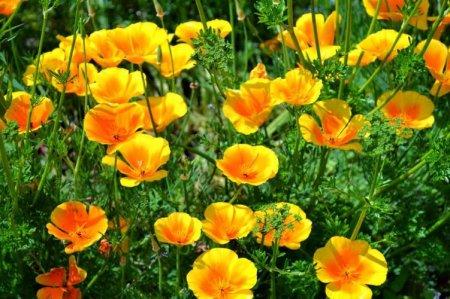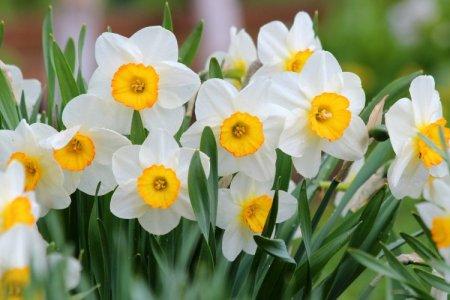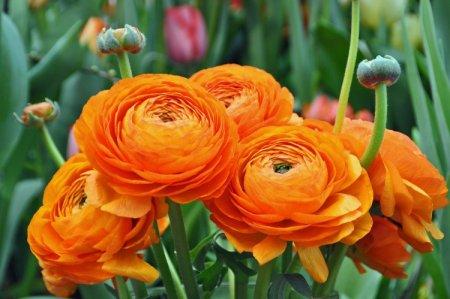
The beauty of magnolia is so beautiful that even tourists come to see its flowering in the city and in the botanical gardens. Moreover, there are so many different types, and each of them is amazing in its own way. It seems that such a lushly blooming tree must be very moody. But we have already figured out whether this is really so!
general information
In countries where magnolia grows in the wild, legends are made about it and magical properties are attributed. This is a very ancient, beautiful and hardy representative of the family of the same name. Even outside the flowering season, magnolia is decorative with its juicy leathery leaves.
It is believed that magnolia was already in the era of the dinosaurs, and survived them safely. There are archaeological finds in the form of petrified flowers that are many millions of years old. And this is not so surprising, considering how well the plant adapts to different conditions, even in our time.
Magnolia is a tree or sprawling shrub with an average height of 5-20 m. Large buds open with large emerald leaves, ovoid or oval. Depending on the variety, the diameter of the flowers ranges from 6 to 35 cm, and each consists of 6-12 petals.
The most common shades are white, pink, red, lilac and their variations. Magnolia blooms in early spring or less often in early summer, and then forms cone-shaped fruits.

Magnolia species
Botanical gardens and reserves around the world have insane collections of dozens or even hundreds of magnolia species. If we are talking about an ordinary garden plot, pay attention to these varieties!
Magnolia Siebold
In its natural environment, this is a tall deciduous tree, but in our latitudes it often grows in the form of a large shrub. Against the background of large oval leaves, snow-white cup-shaped flowers up to 10 cm in diameter look amazing.

Medicinal magnolia
This variety came to us from China, and there it is used as a medicinal plant. Flowers resembling water lilies look very unusual. And the leaves of such a magnolia are truly gigantic.

Star magnolia
One of the most beautiful and at the same time compact species. It has smooth, bare branches, small and relatively narrow leaves, and large white or pink flowers with long, ribbon-like petals.

White magnolia
The Japanese cultivar attracts attention with its gray smooth bark and unusual spicy flower aroma. Over time, they give bright red fruits, and due to this, magnolia is decorative all year round. But she is capricious.

Lily magnolia
A favorite of gardeners, it got its name from the unusual shape of the buds, which really resemble lilies. There are many decorative subspecies and hybrids of the most unimaginable shades.

Pointed magnolia
It is also called cucumber, and in nature it grows to a fantastic 30 m with huge 25-centimeter pubescent leaves. But the yellow bell flowers are not too large - about 8 cm.

Large-flowered magnolia
Everything is good in it: a powerful trunk, a lush crown, huge snow-white flowers up to 25 cm and an unusual spicy aroma. Even the fruits resemble funny decorative cones. But it is sensitive to frost and grows slowly.

Magnolia care
As we said, magnolia is hardy and adapts well to any conditions. So, first of all, take the time and patience to grow a whole tree. And then everything is simple!
Temperature
Most varieties of magnolia, common in our latitudes, easily tolerate heat and frost. Only young seedlings need special conditions, which really need to be insulated and protected.

Lighting
Magnolia loves bright sunlight, and preferably more.Penumbra is acceptable, but for no more than a few hours. Otherwise, the plant will not be able to bloom so luxuriantly.

Watering
Young plants need to be watered regularly and systematically, and adults only during a prolonged drought. The frequency depends on your soil type and weather, but this is about 2-3 buckets of water per tree once a week.

The soil
Choose a moderately moist, light soil that is pre-saturated with organic matter. In addition, in the future, the root system of magnolia requires regular loosening of about 20 cm. But this must be done very carefully so as not to damage the delicate superficial roots.

Fertilizers and feeding
Magnolia should not be overfed because it slows down its growth instead of strengthening it. An overabundance of nutrients leads to salinization of the soil, and the leaves begin to dry out at the edges. In this case, you need to stop feeding and temporarily increase watering.
The first feeding is needed at least 2 years after planting, not earlier. Feed it a little in spring and early autumn, and in summer, monitor the state of the leaves.

Pruning
After flowering, sanitary pruning is imperative in order to remove all dry buds, damaged branches and shoots growing deeper. It is absolutely impossible to do this in the spring. The decorative tree does not need formative pruning. It is recommended to process fresh cuts with garden varnish.

Wintering
Even frost-resistant varieties of magnolia are better protected for the winter, especially if they are young trees. Already at the end of autumn, you need to carefully wrap the trunk with several layers of burlap so as not to injure the branches. And with the first frosts, mulch the soil around.

Transfer
Magnolia is difficult to transplant, so it is best to avoid it. In extreme cases, it is transplanted after watering along with an earthen clod, and the larger it is, the better. It is impossible to strongly compact the soil and bury the root collar in the soil.

Planting and breeding
At home, magnolia is hardly propagated by seeds, because it is long and difficult. Their preparation, soaking and stratification alone take about a month. And it takes several years to grow seedlings.
It is more convenient to use layering. To do this, choose a healthy, but low branch in the spring, bury it in a groove in the ground, pin it and moisten it regularly. It is worth replanting the layering no earlier than after 2 years.
Magnolia can be propagated by cuttings by the same principle. Choose healthy semi-lignified shoots, cut off the lower leaves and treat with a growth stimulant. Cuttings are planted in boxes of sand and peat for rooting.
You need moderate humidity and a stable temperature of 22 degrees. A greenhouse works best for this, and small cuttings can be rooted under the jar. They take root in about 2-4 months, and after a year they can be transplanted into the garden. Magnolias can be planted in holes or trenches.

Pest and disease control
The most dangerous enemy of magnolia is moles, rats, voles and shrews, which create their own tunnels and destroy the root system. Here you will have to control the situation, use mechanical traps or plant trees in wire baskets.
In the heat, spider mites often appear, and thrips, aphids and mealybugs are also found. Insecticides help well from all this, and even better - planned preventive treatment.
The most common magnolia diseases are powdery mildew, scab and gray mold. All these are fungal diseases that are well treated with fungicides. Use copper sulfate if symptoms of bacterial spotting appear.
Yellow spots on the leaves with green streaks are the first symptom of chlorosis. This is not really a disease, but a sure sign of an overabundance of lime in the soil. Until the root system is damaged, add coniferous soil or sour peat to the soil.

Magnolia - photo
Photos are not able to fully convey the beauty of magnolias. But we still tried to put together a large gallery!




























